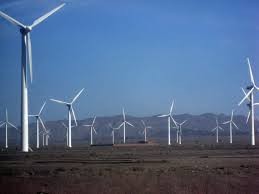Coal remains to be the main source of energy in China, despite the development of different alternative energy sources in the country
Aside from being the largest wind-power generator and biggest solar panel market in the world, China will also become the top producer of hydro-energy after the completion of the contentious Three Gorges Dam, which left 1.2 million people living in the Yangtze River homeless.
Some environmentalist groups were hopeful that the ostentatious plans of China to develop renewable energy resources could later on lead to a significant decrease in the county's coal use, as well as help the rest of the world to put a stop to the extreme effects of climate change and acidification forecast for oceans that is said to happen in the later part of this century.
For William Chandler, the co-author of a study conducted by the Energy Transition Research Institute that sketches out a road map China producing 80 percent of all its electricity consumption from renewable sources by 2015, the road to get to that goal could be rocky but still possible.
Presently, China has an immense energy use and it expands swiftly, making the consumption of coals higher despite the increase for renewable energy production.
Most of the coals are used in the newly-built power plants, which are mostly built by the same government-owned corporations that also invest in alternative energy plants.
Clean Air Task Force Executive Director Armond Cohen said that even if the consumption of coals will reach a plateau, it will remain that way for a long time. The task force works to lessen the carbon emission in China.
Coal presently supplies 65 percent of all the consumed energy in China every year, providing most of the heat and electricity for the 1.3 billion Chinese living in the country. It is also the main source of energy for different Chinese industries.
On the other hand, solar and wind power still provide fewer than three percent of the country's energy needs.



























